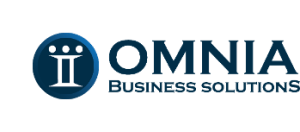Cash flow and profit are financial terms often used interchangeably by small business owners but measure very different parts of a company’s financial health.
Let’s take a closer look.
What is cash flow?
Cash flow is the movement of money in and out of a business. There are three main types of cash flow: operating, investing and financing.
Operating cash flow measures the amount of cash generated by sales minus operating expenses like rent, utilities and salaries.
Investing cash flow measures the money spent on or generated from investments in long-term assets like property, equipment and shares.
Financing cash flow involves cash used to raise or repay capital like loans, equity investments and/or repayments to creditors and investors.
What is profit?
Profit, on the other hand, is a measure of a business’s success and sustainability over the long term. Unlike cash flow, profit is an accounting concept that is recorded on the income statement and may not equal the cash in the bank at a given moment in time. There are three different types of profit:
Gross profit is the revenue a business earns from its core activities minus the cost of goods sold. It measures the direct profitability of producing goods or services.
Operating profit is the profit retained after accounting for operating expenses such as rent, salaries and utilities. It excludes taxes and interest payments.
Net profit is the total profit left after all expenses, taxes, interest and depreciation have been deducted from the revenue. This is often referred to as the bottom line and represents the actual profit made by the business.
Key differences between cash flow and profit
Timing: Cash flow is concerned with the timing of cash movements, whereas profit is focused on the overall financial performance of a business over a specific period. For instance, a business may report a profit at the end of a financial quarter but experience negative cash flow if customers have not paid their invoices on time.
Inclusion of non-cash items: Profit includes non-cash items like depreciation and amortisation, which are recorded as expenses but do not involve actual cash payments to anyone. Cash flow only considers actual money that moves in and out of the business.
Impact on business operations: Cash flow directly affects the day-to-day operations of a business. A business needs sufficient cash to meet short-term obligations like payroll and utility bills. Profit, however, is more indicative of a business’s long-term sustainability and growth potential. A profitable business may still run into difficulties if it does not manage its cash flow effectively.
Cash vs. accrual accounting: Cash flow is tracked on a cash basis, meaning it reflects when cash is actually received or paid. Profit, especially under the accrual accounting method, records revenue when it is earned and expenses when they are incurred, regardless of when the cash changes hands. This difference can cause discrepancies between cash flow and profit, particularly when a business has outstanding receivables or payables.
So while profit measures overall financial success, cash flow ensures that a business can continue to operate on a day-to-day basis.


